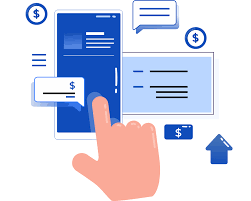The Ultimate Guide to App Development Costs: Calculate Before You Build
 Groovy Web
Groovy Web
Introduction
Embarking on app development is an exciting venture, but it’s essential to approach it with a clear financial plan. Understanding the costs involved helps in setting realistic budgets, securing funding, and ensuring that your app aligns with your business goals without unexpected financial strains. This guide breaks down the various components that contribute to app development costs, offering insights to help you calculate expenses accurately.
Key Factors Influencing App Development Costs
Several elements impact the overall cost of developing a mobile application. Understanding these factors can help you anticipate expenses and make informed decisions throughout the development process.
1. App Complexity
Simple Apps:
Basic functionality
Limited features
Minimal backend infrastructure
Examples: Simple calculators, basic informational apps
Medium Complexity Apps:
User authentication
Integration with APIs
Moderate backend infrastructure
Examples: E-commerce apps, social media platforms
Complex Apps:
Advanced features like real-time updates, AR/VR
Extensive backend infrastructure
High levels of security
Examples: Banking apps, on-demand service apps
Impact on Cost: The complexity directly influences the number of development hours required. More features and intricate functionalities demand more time and resources, increasing costs.
2. Platform Choice
Native Development:
iOS (Swift/Objective-C)
Android (Kotlin/Java)
Native apps offer optimal performance and user experience but require separate development efforts for each platform.
Cross-Platform Development:
- Frameworks: React Native, Flutter, Xamarin
Allows simultaneous development for multiple platforms, potentially reducing costs and time.
Impact on Cost: Choosing multiple platforms increases development time and costs. Cross-platform development can be more cost-effective but may have limitations compared to native apps.
3. Design and User Experience (UI/UX)
A well-designed app enhances user satisfaction and engagement. Costs associated with design include:
Wireframing and Prototyping: Creating the app’s blueprint.
UI Design: Crafting the visual elements.
UX Design: Ensuring intuitive user interactions.
Responsive Design: Compatibility across different devices and screen sizes.
Impact on Cost: High-quality design requires skilled designers and iterative processes, which can elevate costs but are crucial for app success.
4. Features and Functionalities
The app’s features significantly influence development costs. Common features include:
User Authentication: Login/signup systems, social media integration.
In-App Purchases: E-commerce capabilities.
Push Notifications: Real-time updates to users.
Geolocation: Location-based services.
Offline Capabilities: Functionality without internet access.
Third-Party Integrations: Payment gateways, analytics tools.
Impact on Cost: Each additional feature adds to the development time and complexity, thereby increasing costs.
5. Backend Development and Server Costs
The backend supports the app’s functionality, handling data storage, user management, and server-side operations. Costs include:
Database Setup: Choosing and configuring databases.
Server Infrastructure: Cloud services (AWS, Google Cloud, Azure) or dedicated servers.
API Development: Creating interfaces for frontend-backend communication.
Scalability Considerations: Ensuring the backend can handle growth.
Impact on Cost: A robust backend is essential for app performance and scalability, contributing significantly to overall costs.
6. Integration with APIs and Third-Party Services
Integrating external services can enhance app functionality but may come with additional costs:
Payment Gateways: Stripe, PayPal integrations.
Social Media APIs: Facebook, Twitter integrations.
Analytics Tools: Google Analytics, Firebase.
Impact on Cost: Depending on the complexity and number of integrations, costs can vary. Some APIs may have usage fees, adding to ongoing expenses.
7. Development Team Location
The geographic location of your development team affects hourly rates and overall costs:
North America & Western Europe: Higher rates, typically $100-$250 per hour.
Eastern Europe: Moderate rates, approximately $50-$100 per hour.
Asia (India, Philippines): Lower rates, around $20-$50 per hour.
Impact on Cost: Choosing a team from regions with lower rates can reduce costs but may require managing communication and quality considerations.
8. Maintenance and Updates
Post-launch maintenance ensures the app remains functional and competitive. Costs include:
Bug Fixes: Addressing issues as they arise.
Updates: Adding new features, improving performance.
Server Costs: Ongoing infrastructure expenses.
User Support: Handling user inquiries and issues.
Impact on Cost: Maintenance typically costs 15-20% of the initial development budget annually.
9. Testing and Quality Assurance (QA)
Ensuring the app is bug-free and performs well across devices is crucial. QA activities include:
Functional Testing: Verifying features work as intended.
Performance Testing: Assessing app speed and responsiveness.
Security Testing: Ensuring data protection and privacy.
Compatibility Testing: Ensuring app works on various devices and OS versions.
Impact on Cost: Comprehensive testing requires dedicated resources, increasing initial development costs but preventing costly fixes post-launch.
10. Project Management
Effective project management ensures timely delivery and adherence to budget. Costs include:
Project Managers: Overseeing development processes.
Communication Tools: Facilitating team collaboration.
Documentation: Maintaining project records and specifications.
Impact on Cost: Project management is essential for smooth development, adding to the overall budget but ensuring efficiency and quality.
Conclusion
Calculating app development costs before building is a critical step that can determine the success or failure of your project. By understanding the various factors that influence costs and employing strategic planning, you can create software development realistic budget that aligns with your business goals. Whether you’re developing a simple app or a complex platform, meticulous cost estimation ensures that your app not only meets user expectations but also delivers value without financial strain.
Subscribe to my newsletter
Read articles from Groovy Web directly inside your inbox. Subscribe to the newsletter, and don't miss out.
Written by
